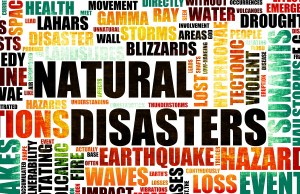

 The U.S. government is starting to focus more on disaster resilience, rather than just responding to natural catastrophes when they occur – something long called for by the property/casualty insurance industry.
The U.S. government is starting to focus more on disaster resilience, rather than just responding to natural catastrophes when they occur – something long called for by the property/casualty insurance industry.
On Oct. 5, President Donald Trump signed the Disaster Recovery Reform Act of 2018 into law as part of the Federal Aviation Administration Reauthorization Act of 2018. The law, in part, authorizes the National Public Infrastructure Pre-Disaster Hazard Mitigation Grant Program, which will focus on areas including funding public infrastructure projects that increase community resilience before a disaster occurs. This money will enable communities nationally to plan and implement disaster mitigation programs that could help minimize the impact of storms such as Hurricane Michael. There is also a focus on helping to reduce risks from future disasters after fires and enabling states to boost their capacity to manage disaster recovery services, the Federal Emergency Management Agency notes on its website.
There remains, however, a long way to go.
A day before Trump signed the new legislation into law, FEMA Administrator Brock Long harshly criticized communities’ lack of preemptive preparation for disasters such as Hurricane Michael, as well as citizens who don’t heed evacuation warnings, putting themselves as greater risk. The industry also continues to call for more preemptive disaster mitigation actions—something that Long’s comments bluntly touched on.
Groups that represent and study the insurance industry say Long’s comments crystalize the industry’s greater push for broad resilience-based public policy planning.
“The Insurance Information Institute (I.I.I.) agrees with many of the things FEMA Administrator Brock Long said at that press conference,” Sean Kevelighan, the I.I.I. CEO, said in prepared remarks. “A combination of public policies—built around hurricane preparedness, more resilient building and the creation of a vibrant flood insurance market—must be pursued as U.S. windstorms grow in their frequency and severity.”
The Insurance Gap
Chris Hackett, a senior director at the Property Casualty Insurers Association of America, asserts that Long’s remarks point to a bigger disaster resiliency problem that still gets a short shrift: the insurance gap.
“Administrator Long’s comments underscore a major and often overlooked public policy crisis: the millions of families and businesses that are underinsured or uninsured for natural catastrophes,” Hackett said in prepared remarks. “Hurricanes Florence and Michael provide yet another reminder that policymakers, consumers and insurers need to work together to identify solutions for bridging the insurance gap.”
Hackett added that Long’s comments underlie the importance, particularly in the Gulf and Atlantic region, of enacting “strong, uniform, statewide building codes with sufficient enforcement measures.”
“Mother Nature should not be underestimated,” Hackett said. “Insurance is the critical safety net that helps individuals and communities rebound from a major catastrophe. Flood, earthquake and renter’s insurance are just a few examples of the type of coverage Americans may need to be resilient.”
New Law Reflects Progress in Disaster Mitigation Planning
While struggles remain in enabling a far-reaching disaster resilience climate, the new disaster recovery mitigation law still illustrates progress, according to Jimi Grande, senior vice president of government affairs for the National Association of Mutual Insurance Companies.
“Mitigation truly is a win-win policy for all Americans,” Grande said in prepared remarks issued before the reforms were signed into law. “By arming our nation’s communities with new tools to protect themselves against the risk of floodwaters or to strengthen homes against extreme winds, wildfires or any of the natural disasters that are occurring more frequently in recent years, we will significantly reduce the need for disaster aid. And, more importantly, fewer Americans will be left to put their lives back together in the wake of a natural disaster.”